Asus ROG Zephyrus M16 (2022) GU603Z review: Huge processing power you can carry with you
The Zephyrus M16 combines a potent 14-core processor with capable graphics and features in a bag-friendly format
-
+
Supreme CPU performance
-
+
Capable GPU
-
+
Fast 2TB main storage
-
+
Bright, colourful 16in display
-
+
Thunderbolt 4 and USB C connectivity
-
+
USB Type A ports
-
-
No professional-grade graphics option
-
-
Slower professional 3D results than expected

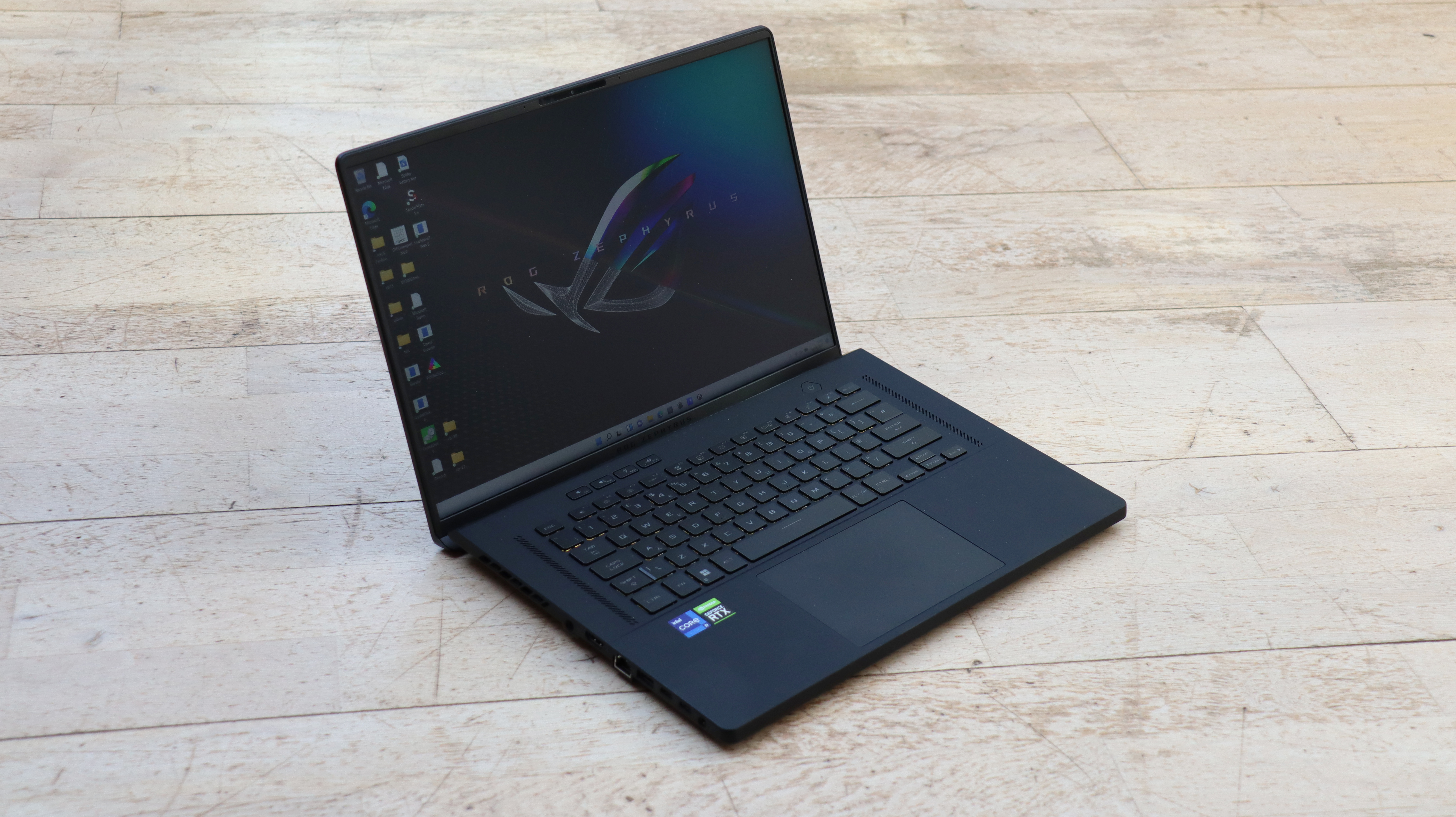
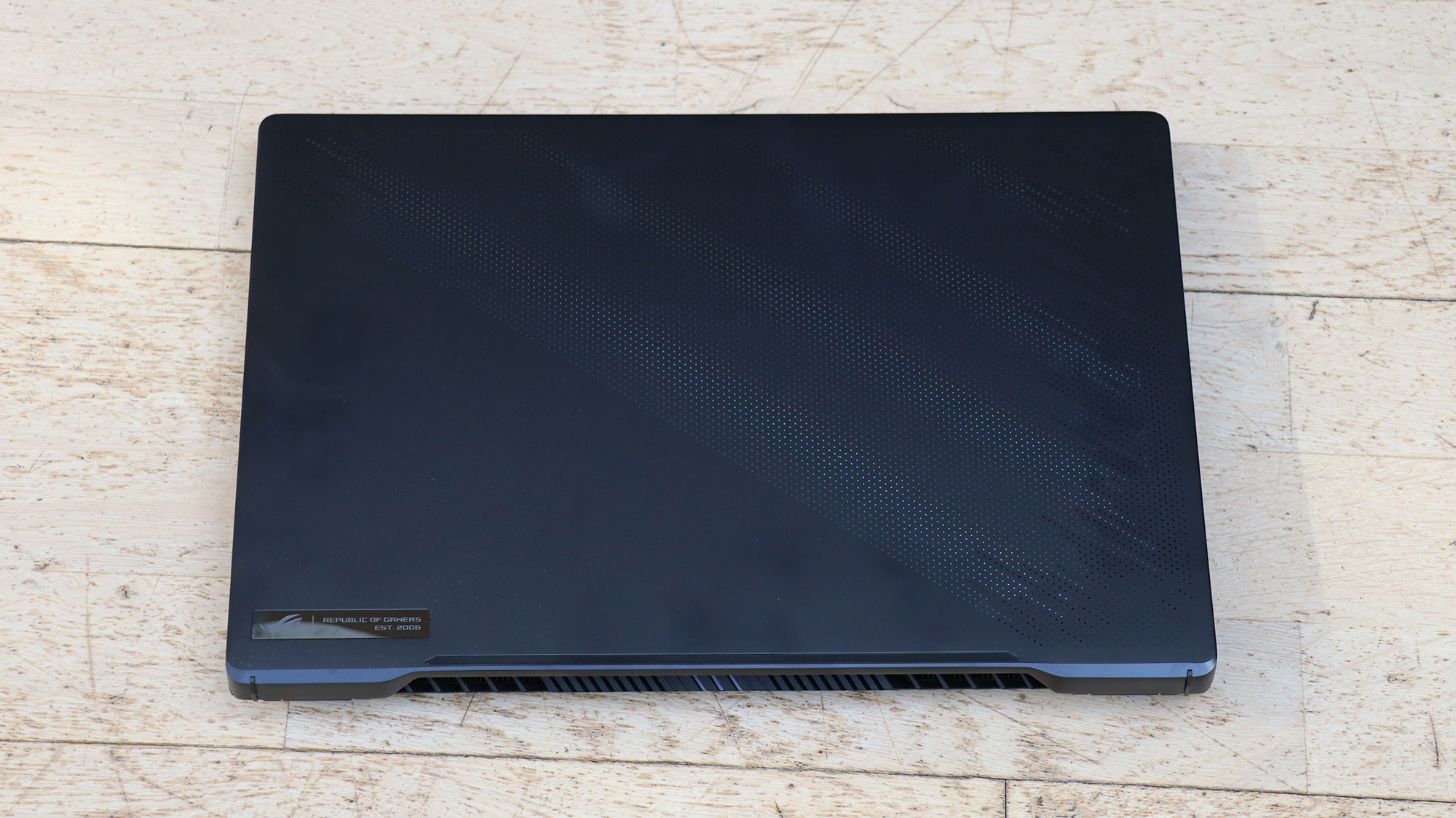
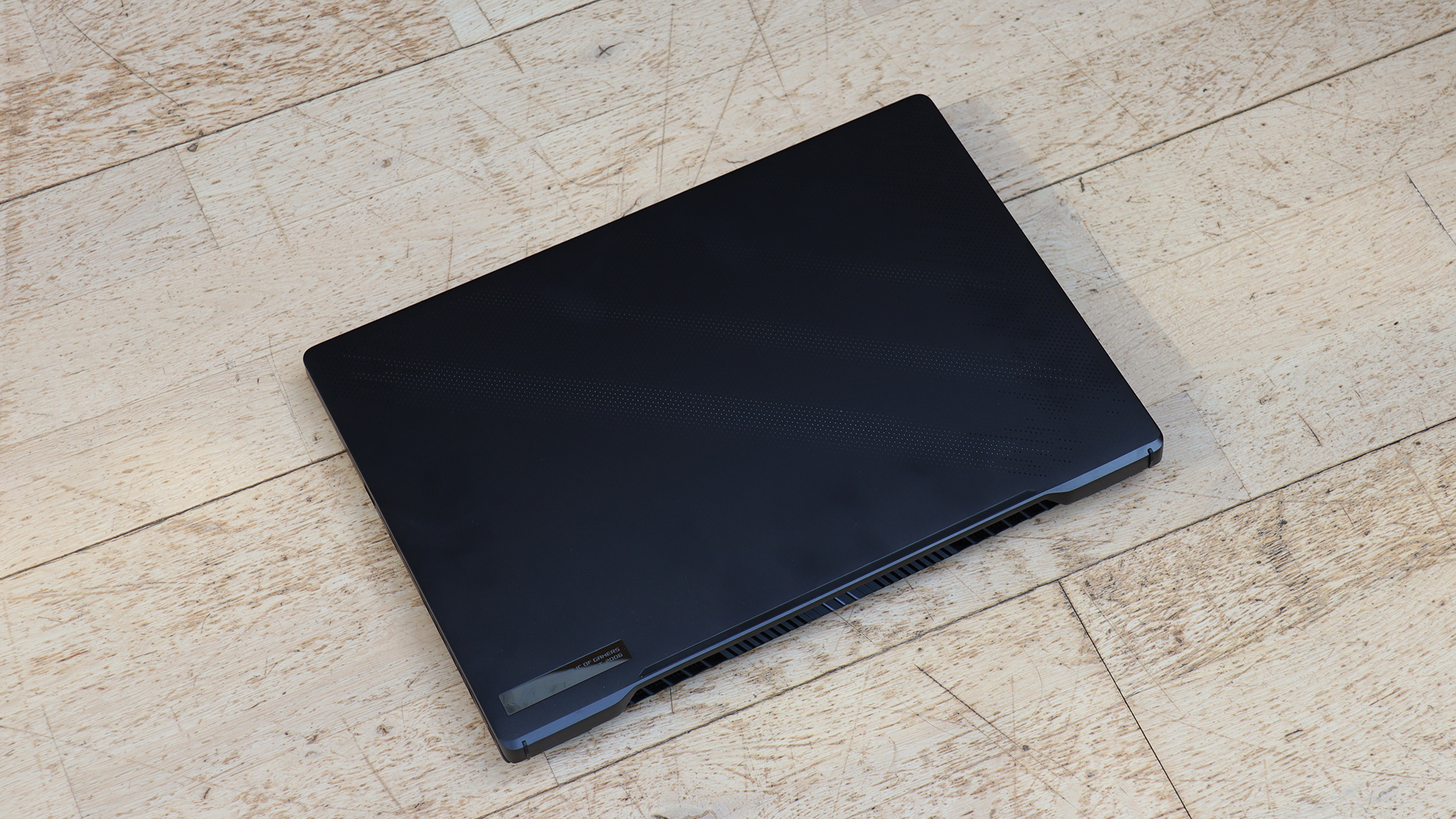
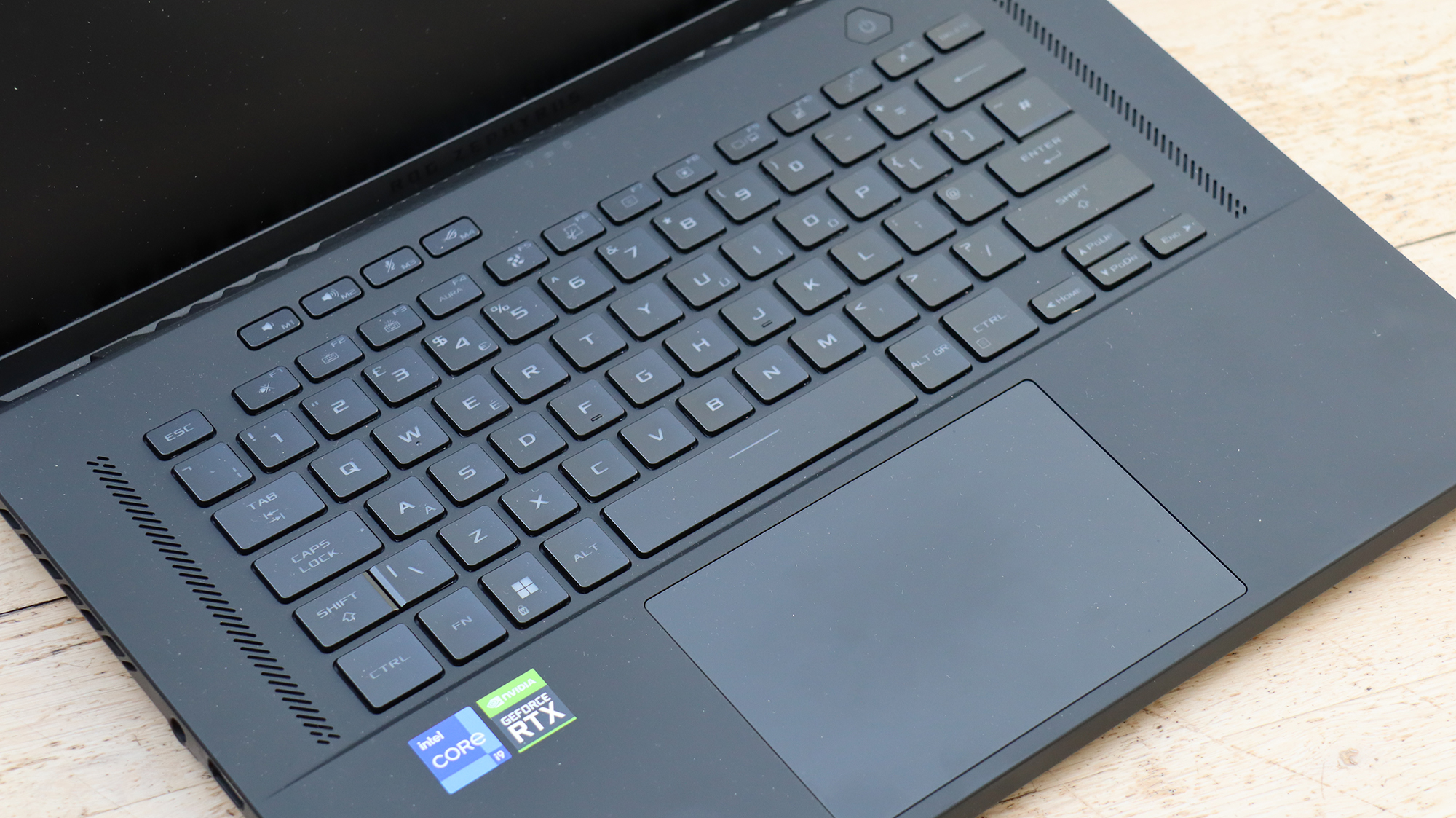
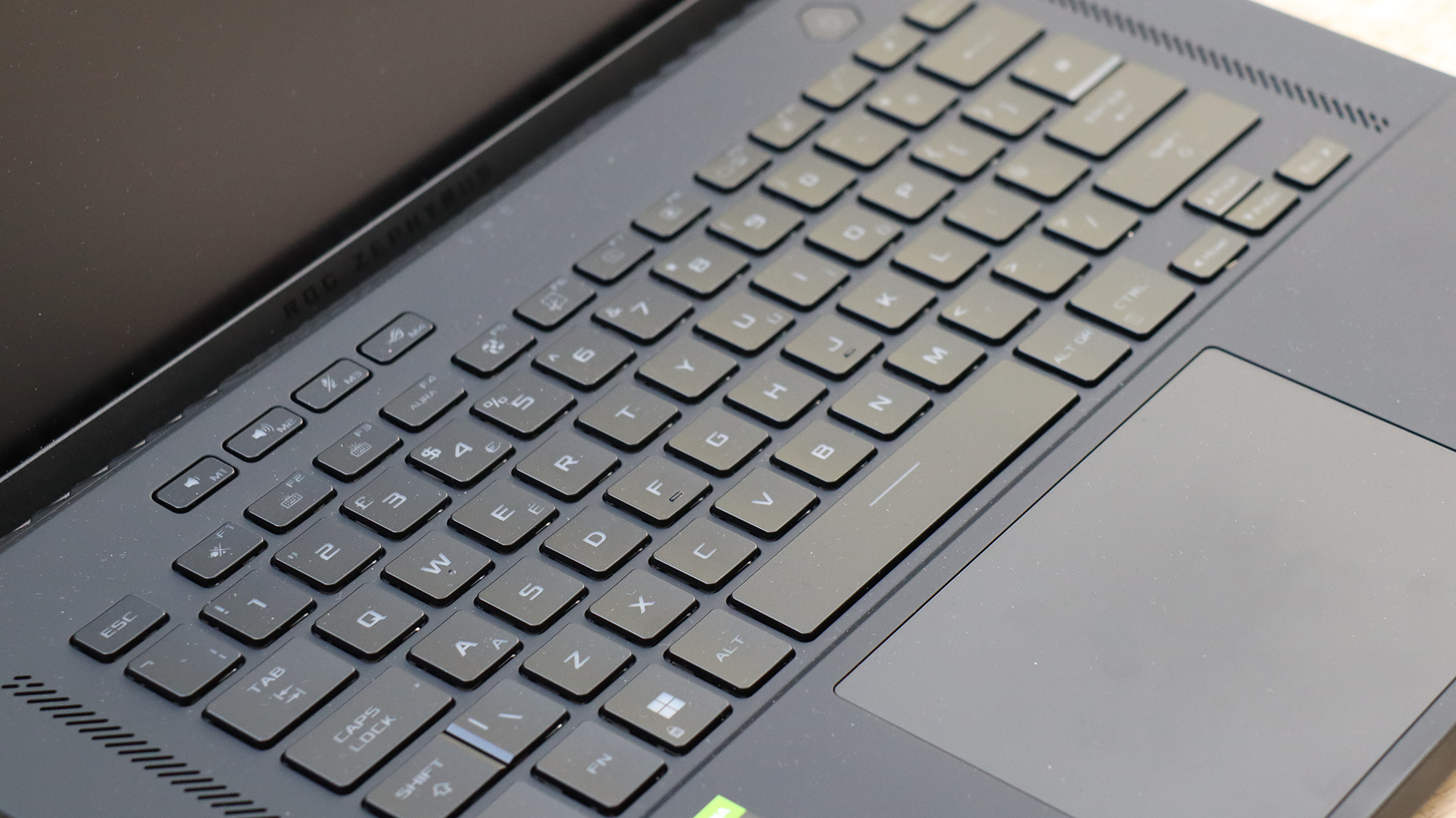
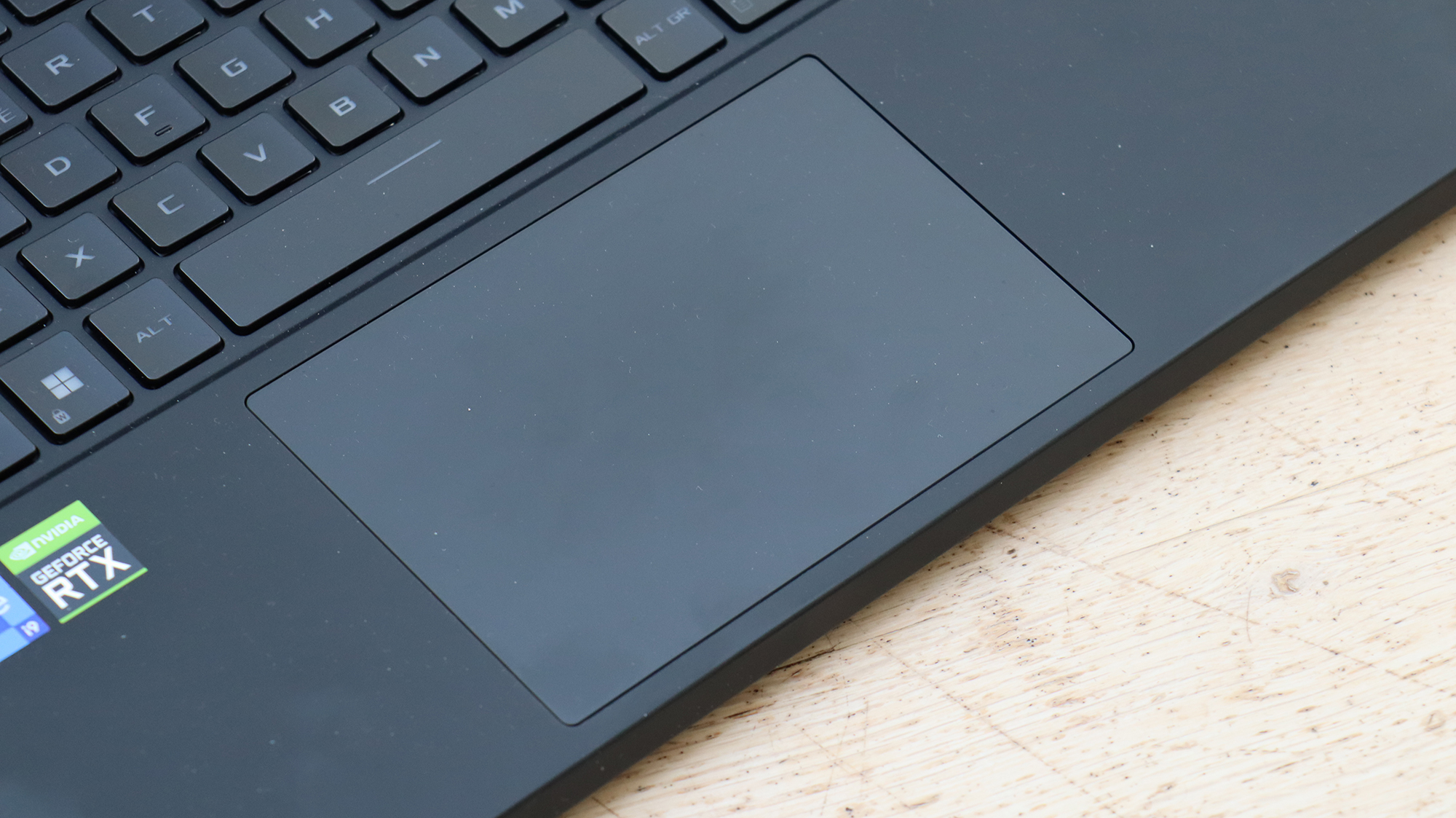
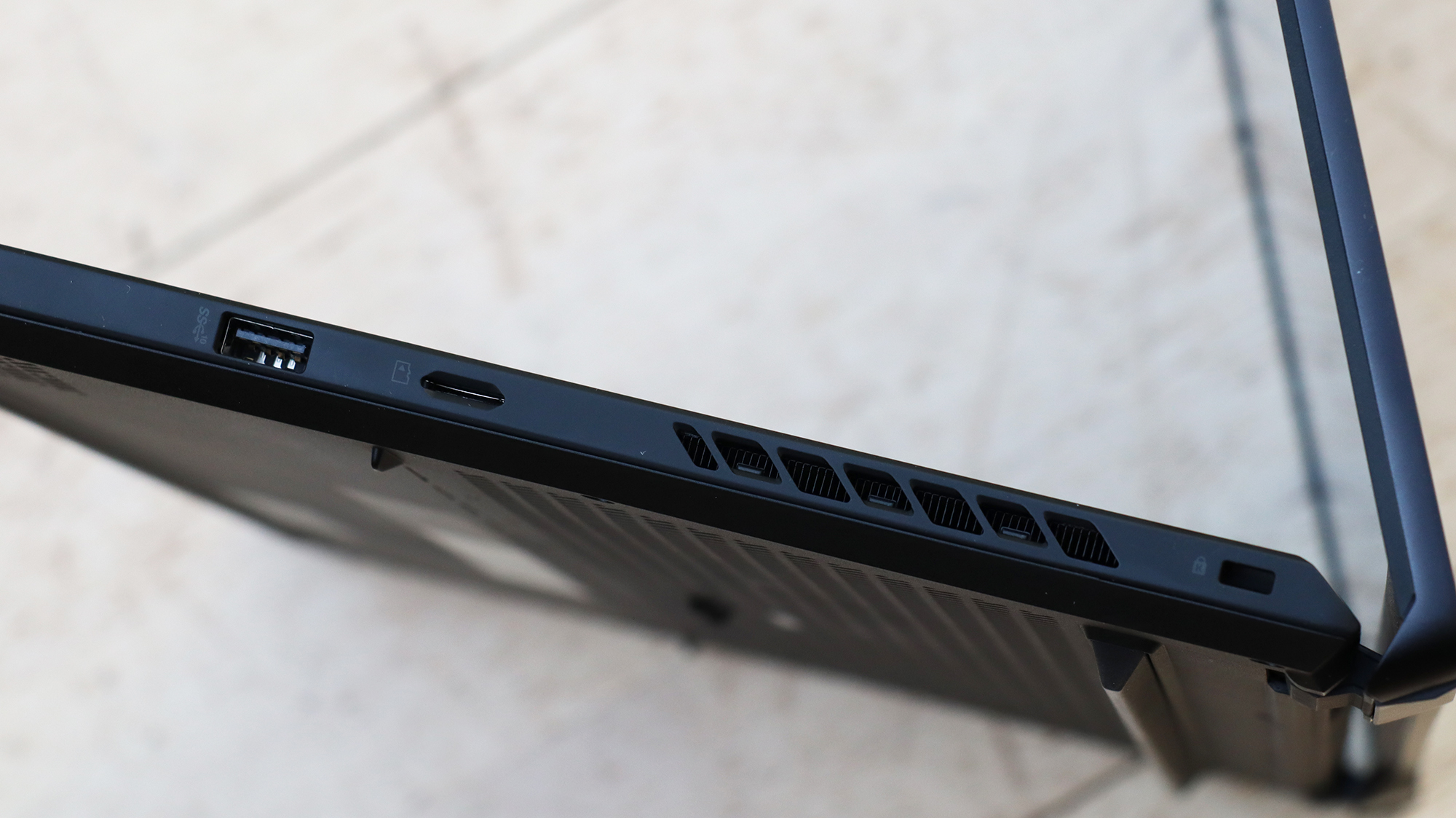
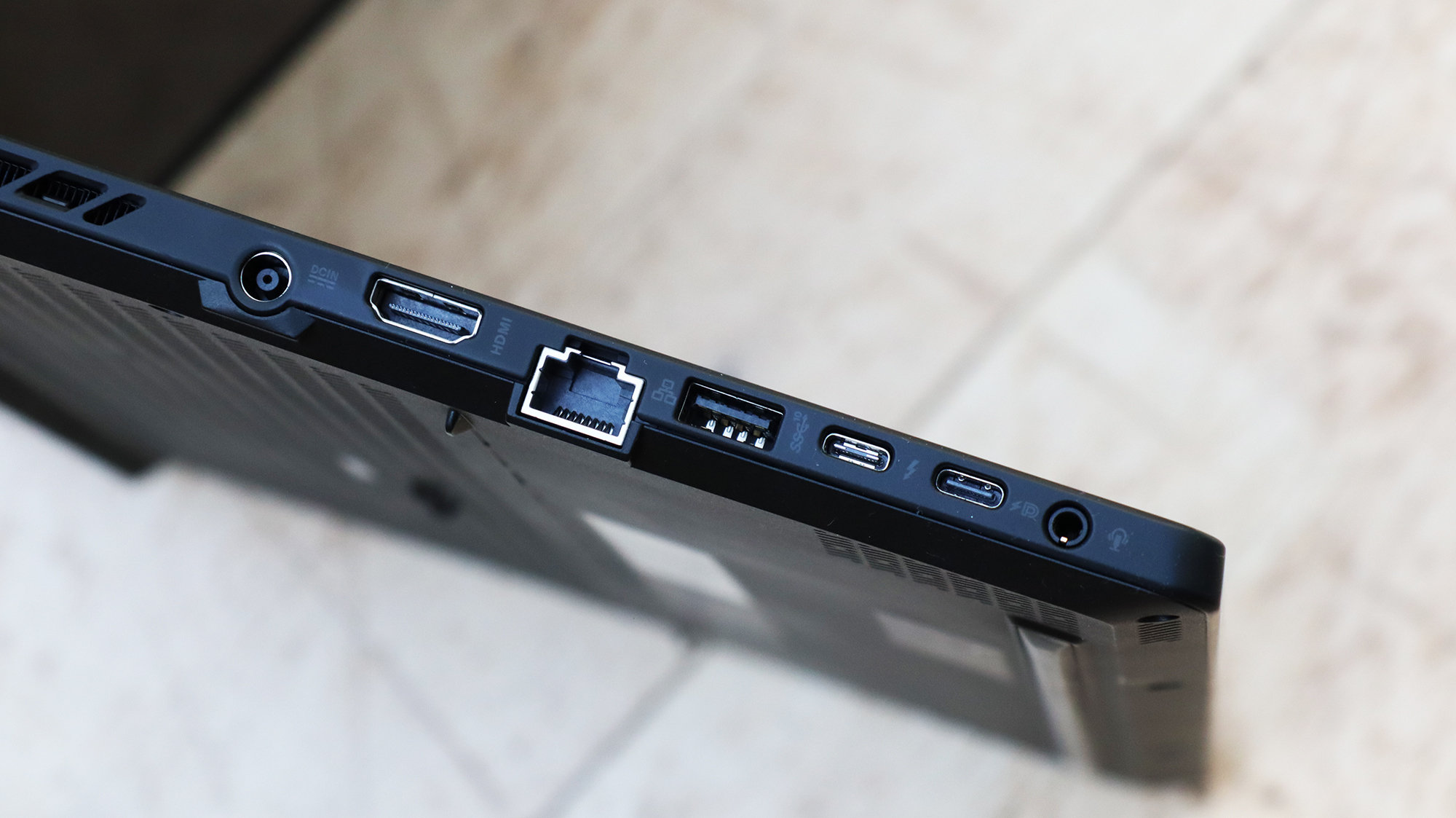
Intel’s latest “Alder Lake” CPUs have given the company a new lease of life with their exceptional power. The ASUS ROG Zephyrus M16 shows that they don’t even need to be housed in a huge desktop replacement notebook either. Weighing in at 2kg, this laptop is still distinctly portable - but with a 14-core processor inside, it can deliver performance to better many desktops, and it has potent graphics acceleration to match.
Asus ROG Zephyrus M16 review: Design
2022 has seen affair few ASUS laptops get a refresh, this model has to so it won’t get mistaken with the design from last year – that had the previous-generation Intel processor. This confusion could be forgiven from looking at the notebook, however, because the chassis itself hasn’t changed noticeably since 2021.
This is a more inoffensive device offering than the ASUS ROG Strix Scar 17. It has a matt black finish, with fewer LED lights beyond the keyboard. It also looks more restrained when the screen is lifted. However, it is a good-looking laptop, it sports a diagonal surfaced section on the top to display the ASUS ROG motif, but with a much less flashy marking in the corner.
The M16 has a 16in frame, this feels like a small decline from a 17in desktop replacement laptop, but the size and weight are significant compared with the Alienware x17 R2, for example. The Zephyrus M16 is around 2kg in weight, and while the near-2cm thickness is still quite unwieldy, this is a laptop you could easily take around with you.

Asus ROG Zephyrus M16 review: Display
We’ve seen laptops in this range with 4K-level screens, such as the Asus ProArt Studiobook Pro 16 OLED, but the Zephyrus M16 plumps for a 16in screen that has a 2,560 x 1,600 resolution and a 16:10 aspect ratio. The screen comes with IPS technology and offers a 3ms pixels response and 165Hz refresh, which is great for gamers but may not be a selling point for those wanting to use this in a business.
The colour gamut of this display is outstanding, providing 100% of sRGB and 98% of DCI-P3. The official rating is for 100% of DCI-P3 but getting just 2% away is still praiseworthy. Colour accuracy is also very good, although not as good as others we’ve examined.
The average Delta-E colour variance of 1.11 is good, however, the maximum of 2.79 is a bit more of a deviation. The maximum screen brightness of 475cd/m2 means this is a very vibrant panel that should be noticeable even in a very well-lit setting. We had no trouble seeing it in direct sunlight. This screen will be brilliant for media viewing, other entertainment uses such as games, and the wide gamut will mean it will be handy for professional work as well.
Asus ROG Zephyrus M16 review: Keyboard and trackpad
The 16in chassis isn’t wide enough for the keyboard to be accompanied by a numerical keypad, but the chiclet keys are full-sized and have a solid travel, making touch-typing comfortable. ASUS tends to place the # key above the Enter key on its notebooks. This will need acclimatisation if you’re used to a layout with a taller Enter key but otherwise, this is a comfortable, ergonomic keyboard.
The trackpad is massive, and although it is centrally placed, so is the keyboard, so it’s well situated to avoid contact while typing. The ridge around trackpad is very shallow, but it’s very close to the front edge of the notebook and the keyboard at the back, so you don’t need to look down to be sure you’re pressing in the right place. The trackpad is also responsive and accurate.
Asus ROG Zephyrus M16 review: Hardware and performance
Central to ASUS’s 2022 laptop refresh is the adoption of the 12th Gen Intel Core processor. The Zephyrus M16, like the ROG Strix Scar17, uses the near-top processor model from this generation, the Core i9-12900H. This incorporates a whopping 14 cores, although they are not all the same. Instead, the CPU has 6 P performance cores and 8 E efficient ones. The P cores have a nominal 2.5GHz frequency with 5GHz turbo mode, whereas the E cores operate at 1.8GHz up to 3.8GHz. The 12900H in our sample was backed by 16GB of DDR5-4800 memory, although there is also an 8GB option (which is not recommended with this many cores). You can upgrade the Zephyrus M16 up to 48GB (but only 40GB if you started with 8GB).
The graphics acceleration is also extremely high-end on this laptop, in the shape of an NVIDIA GeForce RTX 3070 Ti GPU. This combines a potent 5,888 CUDA cores with 8GB of GDDR6 memory. You can purchase a version of the Zephyrus M16 with 3060 or 3080 Ti graphics, with the latter offering a massive 10,240 CUDA cores and 16GB of GDDR6 memory. These are all high-end gaming options, but sadly there is no professional graphics choice.

All variants of the Zephyrus M16 come with a sizeable 2TB NVMe PCI Express 4.0 SSD as main storage. This is a very fast example of the genre, too; the SSD delivered sustained reading of 7,085MB/sec and sustained writing of 5,258MB/sec with CrystalDiskMark 8. This is extremely rapid throughput and the 2TB capacity will be ample for the lifetime of the notebook.
With the same processor as the ASUS ROG Strix Scar 17, performance is similarly superb with everyday applications. In our IT Pro media benchmarks, the overall score was an excellent 388, although the Scar 17 delivered an even more impressive figure. The Zephyrus M16’s result was made up of 236 in image editing, 370 in video editing, and 451 in multi-tasking, showing excellent capabilities across the board.
This performance was emphasized by similarly superb results with Maxon Cinebench. The Zephyrus M16 delivered 6,836 in R20 and 17,626 with R23 mutli core and 1,929 single core. These are the levels of CPU performance we saw in 16-core AMD Ryzen Threadripper 1950X desktops of just a few years ago like the Armari Magnetar S16T-RW1000G2 - although current Ryzen 9 5950X models such as the Scan 3XS RTX Studio Pro G132R are further ahead now.
The GeForce RTX 3070 Ti is not a professionally focused graphics accelerator, but it’s so powerful it will still do very well with most 3D content creation applications. To show this, we ran SPECviewperf 2020 v1.0. The Zephyrus M16 managed 56.2 in 3dsmax-07 and 112.27 in maya-06, which are decent but behind what we were expecting for this GPU. Similarly, the scores of 53.34 in catia-06, 64.65 in creo-03 and 59.52 in solidworks-05 indicate usability but aren’t up with what we expected. The result of 18.75 in snx-04, however, shows the expected inability of consumer-grade graphics to run Siemens NX smoothly.
Asus ROG Zephyrus M16 review: Battery life
A laptop this powerful shouldn't have the same battery life as a slim and light model designed for travellers, but the Zephyrus M16 performed better than we anticipated in our movie playback battery test, lasting 10 hours and 20 minutes. That's not nearly as long as, say, the Dell XPS 17, which lasts more than 11 hours. This is a credible result, however, the Zephyrus M16 is more potent than the XPS 17. It is far more adaptable than a larger desktop replacement because it may endure an entire workday or an entire transatlantic journey.
Asus ROG Zephyrus M16 review: Ports and features

The Zephyrus M16 offers the latest Wi-Fi 6 capability, and there’s plenty of wired connectivity available too. On the left next to the power connection is an HDMI 2.0b video output, plus Gigabit LAN. Further along is a single USB 3.2 Gen 1 Type A port, which will be great for attaching a flash memory drive. Then there’s a USB 3.2 Gen 2 Type C port, delivering 20GB/sec bandwidth with DisplayPort support and power output. Next door is a Thunderbolt 4 port with twice the bandwidth and more power output, able to support two 4K displays at once and PCI Express devices. Finally, there is a combo analog audio minijack.
The right-hand edge also offers a USB 3.2 Gen 1 Type A port, in a great place to connect a mouse (if you’re right-handed). Next door is a slot for a microSD card, which will be handy if you use a media capture device that employs this format, such as an action camera. Overall, it’s a comprehensive port selection, and it’s great to see legacy Type A and HDMI alongside futureproofed Type C and Thunderbolt 4, plus a built-in card reader.
Asus ROG Zephyrus M16 review: Verdict
The ASUS ROG Zephyrus M16 offers extraordinary desktop-level computing power in a device with a day's worth of battery life. It's just the right size for you to tote along as well. The screen is vibrant and has a wide colour range. A wide variety of connecting options are available, from the venerable USB Type A to the cutting-edge Thunderbolt 4. This is a fantastic multi-purpose notebook that can master many different skills in addition to being a proficient jack of all trades.
Asus ROG Zephyrus M16 specifications
| Processor | Intel Core i9-12900H |
| RAM | 16GB DDR5-4800 |
| Graphics | Intel Iris Xe + NVIDIA GeForce RTX 3070 Ti with 8GB GDDR6 memory |
| Storage | 2TB NVMe PCI Express 4.0 SSD |
| Display | 16in 2,560 x 1,600 IPS screen |
| Operating system | Windows 11 Pro 64-bit |
| Connectivity | 802.11ax WiFi 6, Bluetooth 5.2 |
| Ports | 1 x Thunderbolt 4 / DisplayPort, 1 x 3.5mm combo audio jack, 1 x HDMI 2.0b, 1 x LAN, 1 x USB 3.2 Gen 2 Type-C, 2 x USB 3.2 Gen 1 Type A, microSD card reader |
| Dimensions | 355 x 243 x 19.9mm (WxDxH) |
| Weight | 2kg |
| Warranty | 1yr limited hardware |
Get the ITPro daily newsletter
Sign up today and you will receive a free copy of our Future Focus 2025 report - the leading guidance on AI, cybersecurity and other IT challenges as per 700+ senior executives
Dr James Morris has worked as a technology journalist for over 25 years, including spending nine years on the staff of market-leading computer magazine PC Pro, the last five of which were as the publication’s editor. He specialises in enterprise-grade software and hardware, with a particular focus on content creation. He launched a pioneering video channel for HEXUS.net in 2006 and ran the video reviews channel for TrustedReviews.com for four years. He also runs a successful online digital content and commercial video production company, t-zero communications Ltd.
Dr Morris is a prolific technology writer and contributes commercial content for major IT brands including AMD, BlackBerry, Dell, Cognizant, HP, and IBM. He published a book on artificial intelligence, Can Computers Create Art? in 2009. He is also an academic, and is currently Pathway Director of the MA, Interactive Journalism at City, University of London.
Previously, he was course leader for the BA in Web Media Production at Ravensbourne University. He has a PhD in Philosophy, Art and Social Thought from the European Graduate School in Switzerland, a Master's in Media Arts from the New School in New York, USA, and a Bachelor's in Social Anthropology from the London School of Economics.
Dr. Morris can be found on Twitter at @Cyberwest, or emailed at j@tzero.co.uk
-
 Cleo attack victim list grows as Hertz confirms customer data stolen – and security experts say it won't be the last
Cleo attack victim list grows as Hertz confirms customer data stolen – and security experts say it won't be the lastNews Hertz has confirmed it suffered a data breach as a result of the Cleo zero-day vulnerability in late 2024, with the car rental giant warning that customer data was stolen.
By Ross Kelly Published
-
 Women show more team spirit when it comes to cybersecurity, yet they're still missing out on opportunities
Women show more team spirit when it comes to cybersecurity, yet they're still missing out on opportunitiesNews While they're more likely to believe that responsibility should be shared, women are less likely to get the necessary training
By Emma Woollacott Published
-
 OpenAI wants developers using its new GPT-4.1 models – but how do they compare to Claude and Gemini on coding tasks?
OpenAI wants developers using its new GPT-4.1 models – but how do they compare to Claude and Gemini on coding tasks?News OpenAI says its GPT-4.1 model family offers sizable improvements for coding, but tests show competitors still outperform it in key areas.
By Ross Kelly Published